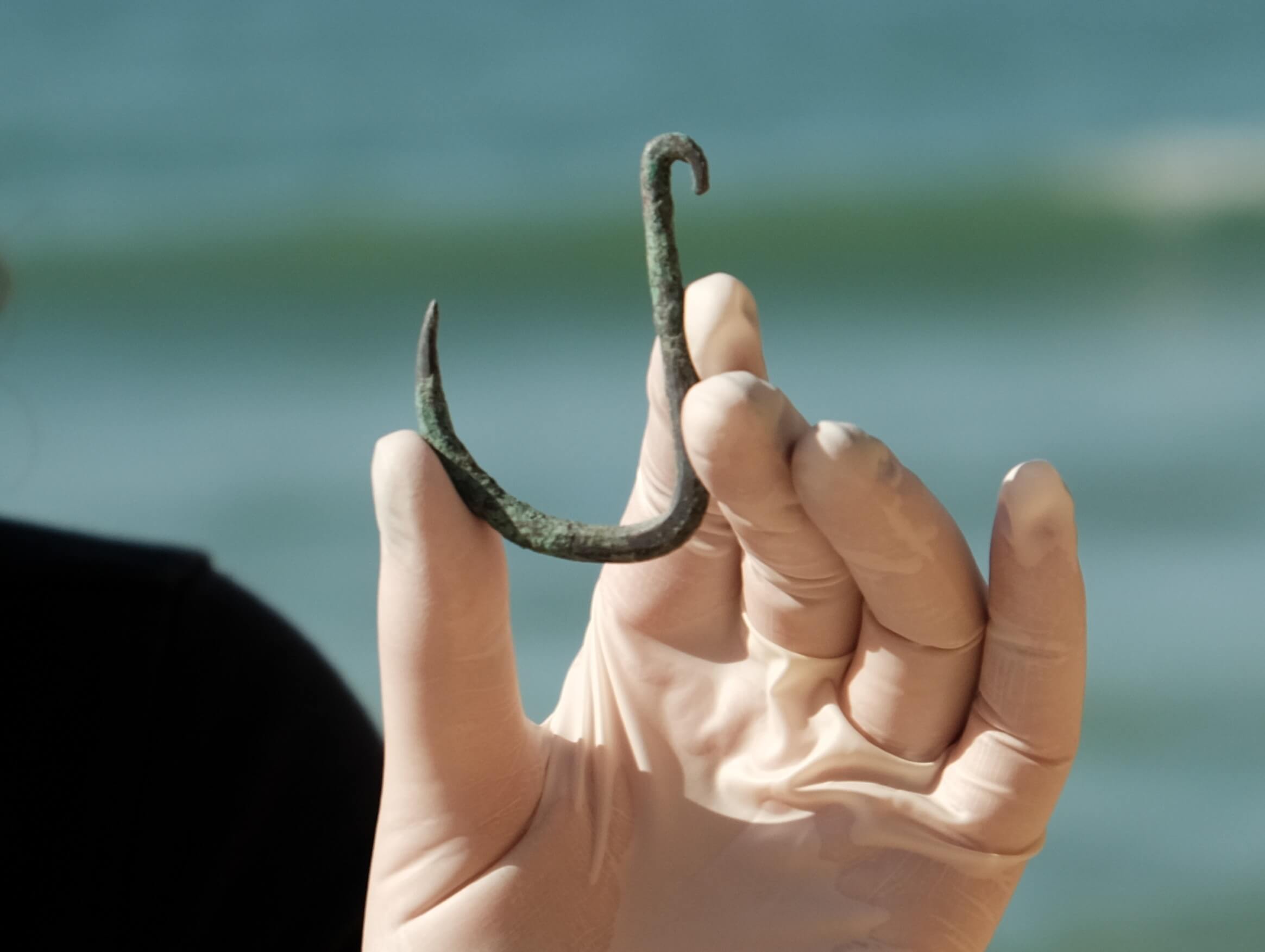The hook, which seems to have been used for hunting sharks, was discovered in the excavations of the Antiquities Authority before the establishment of the Agami neighborhood in Ashkelon * The unique find will be presented for the first time at the 48th Archaeological Congress, organized by the Israel Antiquities Authority, the Society for the Exploration of the Land of Israel and its Antiquities, and the Israel Archaeological Society

A 6,000-year-old copper fishing hook, one of the oldest known in the world, which was used to hunt sharks or very large fish, was discovered in excavations by the Antiquities Authority before the establishment of the Lakes neighborhood in the city of Ashkelon, funded by the Israel Lands Authority. The find, which was discovered in 2018, has now been investigated and revealed for the first time, will be presented at the beginning of April at the 48th Archaeological Congress organized by the Israel Antiquities Authority, the Society for the Investigation of the Land of Israel and its Antiquities, and the Israel Archaeological Association.
According to Dr. Yael Abadi-Reis, who managed the excavation with Dr. Daniel Varga from the Antiquities Authority, "The height of the ancient hook is 6.5 cm and its width is 4 cm, and it is interesting that its size and spacing are suitable for fishing sharks 3-2 m in size, or for large tuna fish. Although earlier fishing hooks have been discovered in the past, they are made of bone, and are much smaller than this hook. The use of copper is an innovation of the Chalcolithic period, and it is fascinating to discover, for the first time, that the technological innovation also reached hook production for the ancient fishermen of the Mediterranean coast."
In the Chalcolithic period, large villages operated here, whose economy was based on branches of agriculture accepted to this day: sheep and cattle grazing, growing wheat, barley and legumes, as well as growing fruit trees. "The eating and hunting customs of people who lived here in the area 6,000 years ago can also be learned from the remains of animal bones that are discovered in ancient garbage pits, charred grain kernels that are exposed in ovens, and also hunting and eating tools - sickle blades and a wide variety of pottery for storing food, for cooking it , and its preservation, which is done in the process of fermentation and salting. "The rare fishing hook tells me the story of the fishermen from the village, who went out in boats to the open sea and threw the new development - a copper hook - into the water, hoping to add coastal sharks to the menu," says Dr. Abadi-Reis.
Research on the unique copper hook continues, led by Dr. Yotam Asher from the Antiquities Authority and Magda in Tiashvili, and more discoveries are expected about the fascinating item.
According to Eli Escozido, director of the Antiquities Authority, "The advanced technologies available to our researchers today open up a whole world of possibilities and questions that previously could not be answered. Just like the fishing hook, every era - and its groundbreaking innovations."
More of the topic in Hayadan:
- Researchers from the Hebrew University, the Antiquities Authority and Macquarie University in Sydney: "We have found the biblical Tzkelg"
- A large and impressive 1,400-year-old well was uncovered in archaeological excavations by the Antiquities Authority in Ramat Ha'il
- Researchers at Tel Aviv University have developed a method that makes it possible to discover antiquities without digging tens of meters deep
- A huge and impressive wine factory was uncovered in Yavne, the largest known in the world from the Byzantine period
- An observation tower from the days of King Hezekiah was uncovered in archaeological excavations by the soldiers of the paratrooper base in the south of Israel
- Two grave estates discovered in Ashdod will be opened to the public
